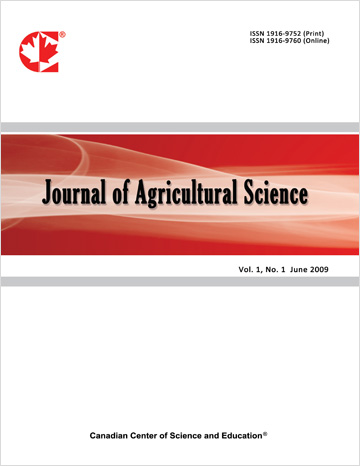Alternative Models in Genetic Analyses of Carcass Traits Measured by Ultrasonography in Guzerá cattle: A Bayesian Approach
- Jairo Junior
- José Souza
- Robert Cushman
- Marco Bink
- Caio Perazza
- Sarah Meirelles
- Tarcisio Gonçalves
Abstract
The objective was to study alternative models for genetic analyses of carcass traits assessed by ultrasonography in Guzerá cattle. Data from 947 measurements (655 animals) of Rib-eye area (REA), rump fat thickness (RFT) and backfat thickness (BFT) were used. Finite polygenic models (FPM), infinitesimal polygenic models (IPM) and FPM combined with IPM (IPM + FPM) were empirically tested, adjusting for the effects of permanent environment, age and weight at measurement and the contemporary group. A Bayesian analysis using the computer package FlexQTLTM was adopted. The combined model adjusted to the data, allowing reliable genetic analyses of REA and BFT. For the RFT, the IPM model was the only one to have convergence and, in this case, the trait should be analyzed by a polygenic model. The presence of up to three major genes (MGs) controlling the expression of REA and two MGs for BFT was detected. The additive genetic action was over dominance to REA, and for BFT the dominance genetic action was greater. Heritability estimates, and respective standard error, adjusted for the combined model to REA were 0.15 (0.00025) for the polygenic fraction and 0.10 (0.00019) for the oligogenic fraction; for BFT was 0.19 (0.00027) and 0.13 (0.00025), respectively. Heritability of 0.17 (0.00028) was estimated for RFT when the model was adjusted to IPM. There are major genes segregating within the population studied for REA and BFT traits, thus, their genetic analyses must be studied considering oligogenic effects. The major gene effects detected for a small number of genes, may possibly help to increase the reliability in detecting chromosomal regions that explain and control the phenotypic expression of these traits, facilitating research on detection and validation of molecular markers in this population.
- Full Text:
 PDF
PDF
- DOI:10.5539/jas.v5n9p29
Journal Metrics
- h-index: 67
- i10-index: 839
- WJCI (2023): 0.884
- WJCI Impact Factor (2023): 0.196
Index
- AGRICOLA
- AGRIS
- BASE (Bielefeld Academic Search Engine)
- Berkeley Library
- CAB Abstracts
- ChronosHub
- CiteSeerx
- CNKI Scholar
- Copyright Clearance Center
- CrossRef
- DESY Publication Database
- DTU Library
- e-Library
- EBSCOhost
- EconPapers
- Elektronische Zeitschriftenbibliothek (EZB)
- EuroPub Database
- Excellence in Research for Australia (ERA)
- Google Scholar
- Harvard Library
- IDEAS
- iDiscover
- Jisc Library Hub Discover
- JournalTOCs
- KindCongress
- LIVIVO (ZB MED)
- LOCKSS
- Max Planck Institutes
- Mendeley
- MIAR
- Mir@bel
- NLM Catalog PubMed
- Norwegian Centre for Research Data (NSD)
- Open J-Gate
- OUCI
- PKP Open Archives Harvester
- Polska Bibliografia Naukowa
- Qualis/CAPES
- RefSeek
- RePEc
- ROAD
- ScienceOpen
- Scilit
- SCiNiTO
- Semantic Scholar
- SHERPA/RoMEO
- Southwest-German Union Catalogue
- Standard Periodical Directory
- Stanford Libraries
- SUDOC
- Swisscovery
- Technische Informationsbibliothek (TIB)
- Trove
- UCR Library
- Ulrich's
- UniCat
- Universe Digital Library
- WorldCat
- WRLC Catalog
- Zeitschriften Daten Bank (ZDB)
Contact
- Anne BrownEditorial Assistant
- jas@ccsenet.org
